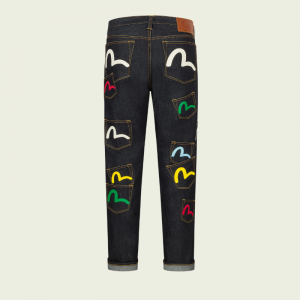Choosing the right way to manage calluses when your skin is sensitive can feel like walking a tightrope: you want effective results without irritation, redness, or broken skin. This article walks you through practical, research-informed guidance and clear decision steps so you can pick tools and routines that are gentle, effective, and safe. Read on for what to look for, what to avoid, and how to use your chosen tool to get smoother feet without drama.
Understand what “sensitive skin” means for foot care
Sensitive skin on the feet typically reacts more easily to friction, strong exfoliants, or sharp tools. It can redden, sting, or peel after even minor attempts at callus removal. Before choosing a product, consider whether your skin is thin, prone to dermatitis, has any open cracks, or if you have underlying conditions such as diabetes or poor circulation—these raise the bar for safety and mean you should consult a healthcare professional before treating calluses at home. For everyday sensitive-foot care, the goal is to reduce thickness and discomfort gradually, using low-abrasion approaches and supporting skin repair with moisturizing ingredients.
Match the tool to your skin type and callus severity
When evaluating options, think about two things: how thick or painful the callus is, and how reactive your skin usually is. Tools range from the gentlest (soft pumice, silicone brushes) to more aggressive (metal files, rotary electric devices). If your skin stings after a scrub or you scar easily, lean toward the gentler end and focus on softening treatments first. For thicker, long-standing build-up that hasn’t responded to gentle care, a more robust tool may be needed, but it should be used sparingly, carefully, and ideally under guidance.
Materials and shapes: what to choose for gentleness and control
The raw material and shape of a tool affect how much abrasion it applies. Natural pumice and soft micro-surface stones provide mild, gradual exfoliation and usually won’t provoke a strong reaction if used lightly after soaking. Emery boards and coarse metal rasps remove more skin quickly and increase risk of irritation; they are rarely the best first choice for sensitive skin. Tools with ergonomic handles and wide surfaces distribute pressure better and help you avoid digging in accidentally. Consider tools with cushioned grips and a broad, flat abrasive face rather than a narrow, aggressive edge—comfort often equals control, which reduces the chance of overdoing it.
Why electronic devices can be both helpful and risky
Battery-powered or plug-in callus removers can make the job faster and more uniform, but their speed and grit mean you must choose carefully. If opting for an electric tool, prefer models with multiple speed settings and a soft, fine-grit roller option. Use the lowest effective speed and keep sessions brief. If the device feels hot, vibrates uncomfortably, or generates friction that stings, stop immediately. For people with extremely sensitive skin, mechanical devices are often overkill and a well-chosen manual tool plus a moisturizing routine will give safer results.
Look for gentle abrasive grades and replaceable heads
A tool’s abrasive grade makes a big difference. Fine-grit surfaces remove dead skin in thin layers while coarser surfaces remove more at once. For sensitive skin, choose a tool that either comes with or supports fine-grade replacements so you can adjust as your skin improves. Replaceable heads keep the abrasive consistent and hygienic; worn-down surfaces can tear rather than smooth the skin. Also favor tools that are easy to clean—nonporous materials or removable parts that rinse clean reduce infection risk.
Active ingredients and complementary products to pair with tools
Treating calluses only mechanically misses a key part of skin health: chemistry. Products that soften hardened skin before you use a tool make the process gentler. Look for soak formulations or creams with urea at low concentrations (typically under 10% for at-home use), lactic acid, or gentle alpha hydroxy acids—these help break down the bonds in thickened skin so the tool removes less physical material. Follow-up moisturizers containing ceramides, glycerin, or petrolatum help seal in moisture and reduce recurrence. When buying kits, you may find combined sets in the corns and callus care supplies aisle—choose those that emphasize low concentrations and gentle, hydrating aftercare.
Technique matters more than the “best” device
Even a gentle tool can injure if used incorrectly. Start every treatment by soaking your feet in warm water for 5–10 minutes or using a warm compress to soften the skin. Pat the area dry lightly; working on wet skin that’s overly soft can cause tearing, while working on completely dry skin forces you to abrade harder. Use light, even strokes in one direction rather than aggressive back-and-forth scraping. Spend no more than a minute or two per area in a single session, and stop as soon as the skin looks smoother — you don’t need to remove every trace of thickening at once. Finish with a hydrating cream and consider wearing breathable cotton socks to help the moisturizer absorb overnight.
Safety checks: when to avoid DIY removal
There are clear red flags where home care is not appropriate. If you have diabetes, neuropathy, circulatory problems, severe redness, signs of infection (pus, increasing warmth), deep cracks that bleed, or ever develop unusual pain, avoid self-treatment and see a podiatrist or dermatologist. Similarly, if you are on blood thinners or have a skin condition such as psoriasis affecting your feet, professional guidance is essential. For most otherwise-healthy people, slow, conservative care reduces risk of adverse outcomes.
Maintenance routine to prevent recurrence
The best tool is the one you rarely have to use because your skin is maintained. After the initial reduction of thickness, transition to a maintenance schedule that prioritizes moisturizing and gentle debridement once a week or every two weeks, depending on how quickly your skin rethickens. Use mild cleansers, avoid tight shoes that cause pressure friction, and consider custom orthotics if specific pressure points keep producing calluses. Regular moisturizing with an emollient that contains a low-dose keratolytic will keep skin supple and reduce the need for mechanical removal.
Choosing a product in the store or online: questions to ask yourself
When reading product descriptions, ask whether the tool has adjustable abrasive grades, ergonomic design, replaceable hygienic heads, and clear safety instructions for sensitive skin. Customer reviews can show how the tool behaves in real-world sensitive-skin situations—look for mentions of no stinging, gentle results, and durability. If a product emphasizes aggressive “razor-like” results, it’s likely not ideal for sensitive skin. And remember that the best-selling, most aggressive product is not necessarily the right one for gentleness and long-term skin health.
Final checklist and gentle reminders
Before your first use, perform a small patch test with any topical softening product and observe for 24 hours. Always clean your tool before and after use. Start slow: less is better than too much. Protect fragile skin by pairing an appropriate device with a moisturizing, keratolytic-containing cream and adjust tools as your skin adapts. If you ever have doubt, professional care is the safest route.
Choosing the right solution for callus care when your skin is sensitive means balancing effectiveness with minimal irritation. By selecting soft abrasives or fine-grit replaceable heads, using gentle chemistry to soften skin first, applying careful technique, and prioritizing follow-up moisturization, you can manage calluses safely and comfortably. If you shop for kits, keep an eye out in corns and callus care supplies for products tailored to sensitive skin, and when in doubt, consult a foot-care specialist. With patience and the right tools, healthier, smoother feet are achievable without pain or unnecessary risk.






